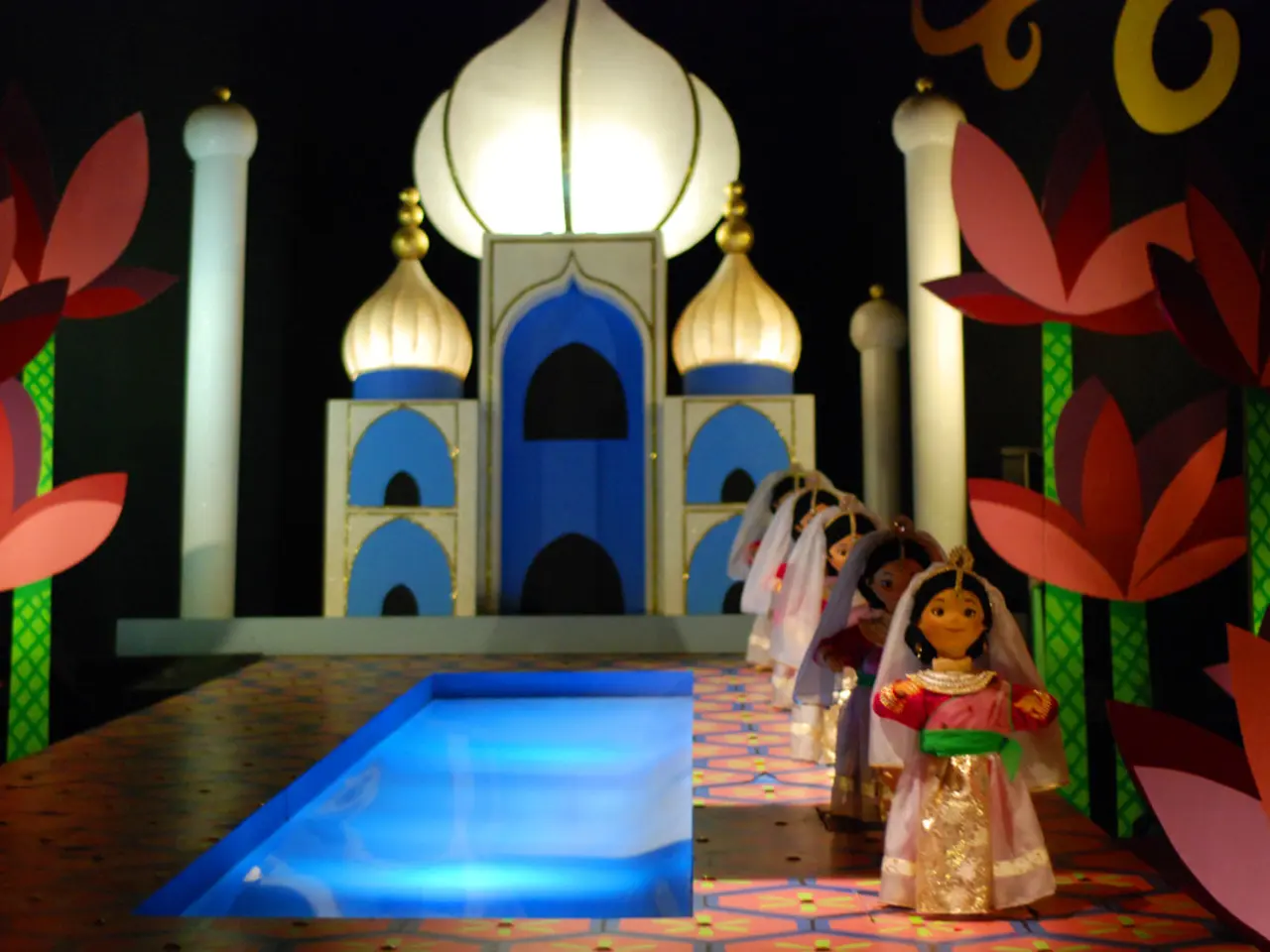India Making Rapid Progress, 79 Years Following Independence, While Pakistan Faces Challenges In Keeping Pace, According to Report
India and Pakistan, two nations born from the same political entity in 1947, have followed different trajectories in the seven decades since their independence. This article offers an overview of their economic, military, and political progress and challenges.
Economically, India has emerged as a major global player. With a nominal GDP exceeding $4 trillion in 2025, it ranks as the fourth largest economy in the world [3]. In contrast, Pakistan's economy is smaller, facing challenges such as debt and dependence on foreign aid [1][4]. India's GDP per capita is around $3,400, while Pakistan's is approximately $1,800 [2].
India is projected to maintain a high growth rate of 6-7% in the coming years, driven by infrastructure investments and a booming services sector [2][3]. Pakistan's growth rate is slower due to its struggles with debt and external factors like geopolitical tensions.
India's economic prowess is also reflected in its substantial foreign exchange reserves, over $688 billion, while Pakistan's reserves are significantly lower, barely surpassing $15 billion [1].
In terms of military capabilities, both countries have focused on building their armed forces since independence. India possesses a larger military budget and more advanced technological capabilities. Pakistan's military spending is substantial but faces budget constraints compared to India [6]. India has a larger fleet of tanks, armored vehicles, aircraft, and aerial refueling tankers than Pakistan [7].
The frequent conflicts between India and Pakistan have had significant economic costs, with recent estimates suggesting losses amounting to billions of dollars even in short-term conflicts [5]. Both countries have faced challenges from terrorism, affecting internal security and international relations. India's military responses have been more assertive in recent years, while Pakistan struggles with internal security threats [8].
Politically, India has a robust democratic system with consistent transitions of power, while Pakistan has faced periods of military rule and political instability [9]. India has strengthened its global diplomatic ties and economic partnerships, becoming a key player in international forums [10]. Pakistan's international relations are more strained, particularly with its neighbors and the West, although it has significant ties with China through the CPEC [11].
Both countries face challenges in governance, with corruption and administrative inefficiencies being significant issues. However, India has made strides in digital governance and transparency initiatives [12]. Pakistan's economy has struggled with political instability, economic crisis, and reliance on foreign aid and IMF bailouts [13].
India's athletes have won 41 Olympic medals since 1900, while Pakistan has won only 11. In the cricket world, India's ODI team was at the top in 2025, while Pakistan stood at the fifth spot [14].
In conclusion, India and Pakistan display stark contrasts in economic, military, and political progress. India's strong economic growth, robust democratic governance, and significant global influence contrast with Pakistan's economic challenges, political instability, and military conflicts. However, both countries continue to face significant internal and external challenges that impact their stability and development.
References: 1. World Bank 2. Trading Economics 3. Trading Economics 4. The Express Tribune 5. The Diplomat 6. SIPRI 7. International Institute for Strategic Studies 8. CNN 9. BBC 10. India Today 11. Asia Times 12. The Economic Times 13. The Express Tribune 14. Cricbuzz
- While India's economy ranks as the fourth largest globally, Pakistan's economy faces challenges such as debt and dependence on foreign aid.
- India's growth rate is projected to be 6-7%, driven by infrastructure investments and a booming services sector, while Pakistan's growth rate is slower due to its struggles with debt and external factors.
- In terms of military capabilities, India has a larger military budget and more advanced technological capabilities than Pakistan, but Pakistan's military spending is substantial.
- Politically, India has a robust democratic system, while Pakistan has faced periods of military rule and political instability, with both countries facing challenges in governance.




